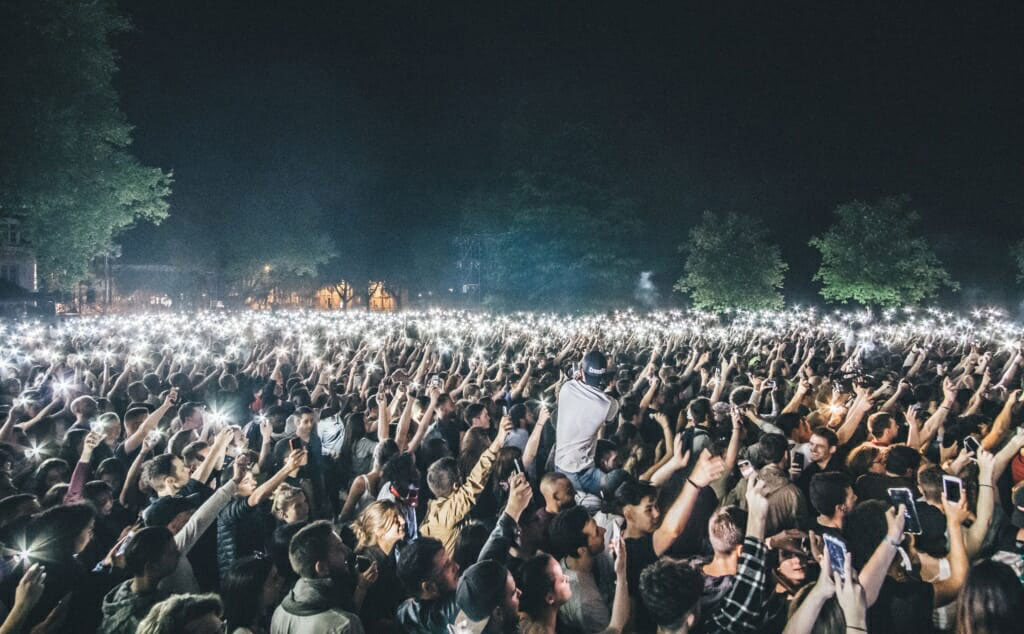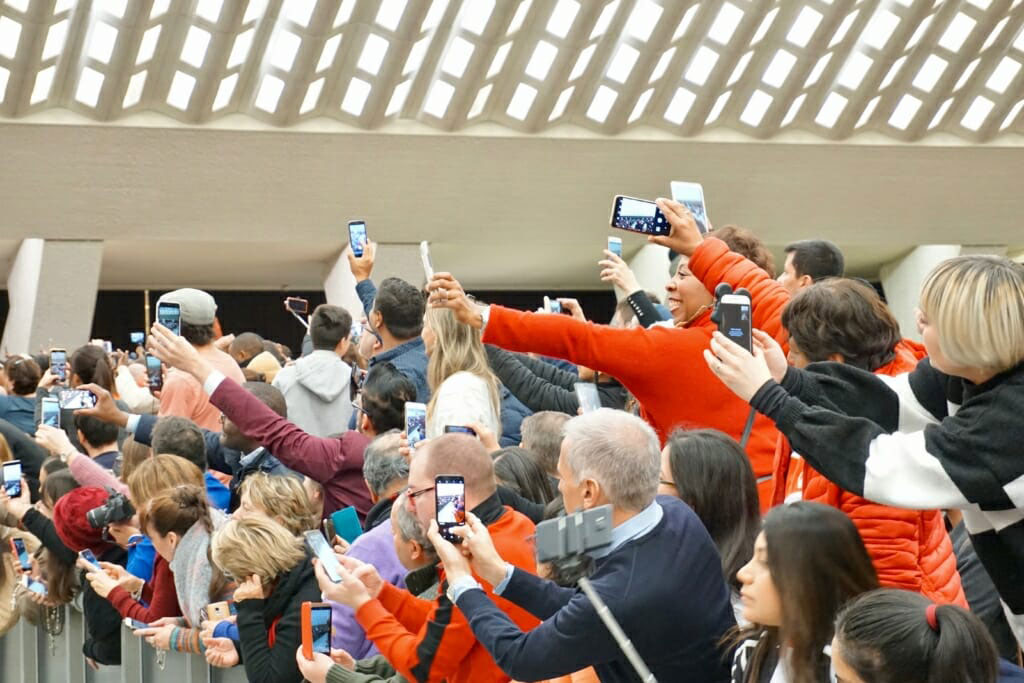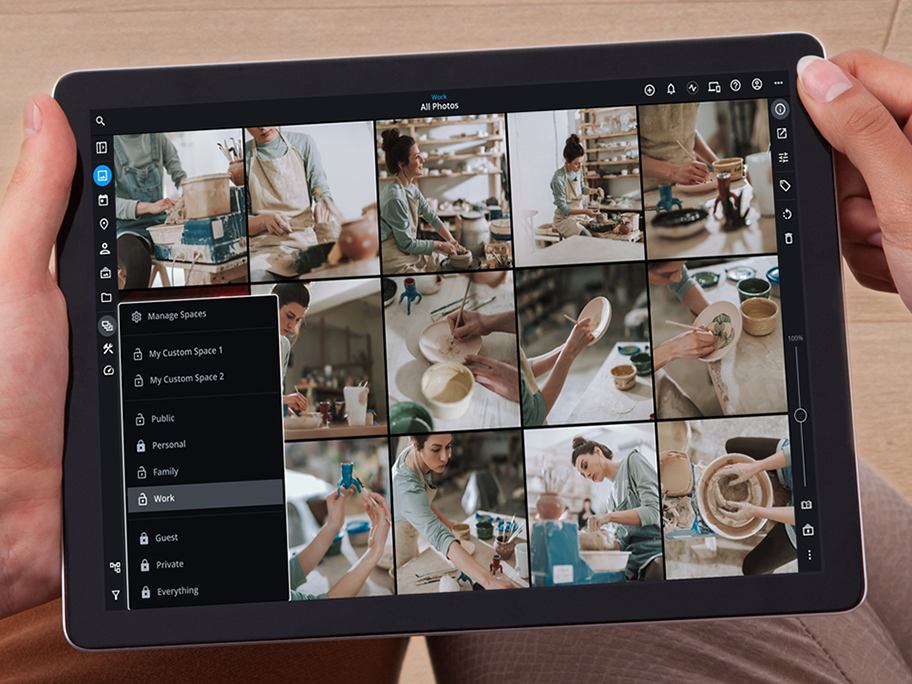It’s 2020, the age of digital photos. Everyone with a phone effectively has a camera within reach, and photo enthusiasts have DSLR’s or better. On top of that people have plenty of other image-capturing devices — drones, tablets, GoPros, and webcams. With all of this technology at our fingertips, we’re capable of taking a lot of photos. Which led the photo-curious at Mylio to wonder, “How many photos will be taken this year? And how will we store them all?”
How many photos in 2020?
To begin answering these questions, we contacted Keypoint Intelligence, a New Jersey-based digital imaging research and consulting company. They’re interested in photos as well, and conducted some fascinating data analysis. Turns out, humanity will take 1,436,300,000,000 photos in 2020.* That’s over 1.4 trillion. At first glance, that seems like a staggering number. And in some ways, it is.
*Update: In June 2021, Rise Above Research, a Massachusetts-based consulting firm that provides market research for the digital imaging industry, updated this forecast to report that the number of photos taken globally in 2020 fell to 1.12 trillion, after factoring in an 18% pandemic-related shutter slowdown.
If you took one photo every second, for instance, you’d need more than 45,544 years to snap the number of photos humans will take in 2020 (and your finger might be a little sore). If you had 1.4 trillion kids standing on each other’s shoulders, they would extend well past Saturn.
Then again, if you divide that number by the population of Earth (7.75 billion people), you’ll see that each person averages only 185 pictures each. Now of course babies won’t be taking any photos — though an adorable percentage of those pictures will be of babies — and, globally, there are millions of people who can’t afford a camera, but it still puts the number in perspective

Keypoint Intelligence has also projected forward a few years, and one of the trends is downright incredible.
Projected number of photos taken per year:

Looking at the numbers in green, you can see that the growth increases in each successive year. As technology improves, taking digital photos will only get easier. But here’s the 1.4 trillion-dollar question: What happens to all those photos?
What happens to all those photos?
What are people doing with this ever-growing mountain of digital images? Keypoint looked into this as well, tracking the number of photos stored each year.
Projected number of photos stored each year:

With numbers like these, it seems likely that if people aren’t thinking about a way to organize, manage, and protect their photos, they will be. And very soon. You need only scroll through your phone’s camera roll, to spot the digital clutter that can quickly take over: Dozens of nearly identical pictures shot on burst mode. Hundreds of functional shots (your airport parking space number from Thanksgiving!). Some of those unnecessary shots are eating up your valuable storage space. And the keepers? If they’re not backed-up properly, they’re just one dropped device or left-your-phone-in-a-café slip-up away from being lost forever.

The future of photo organization
Clearly, the need for photo organization is growing and, fortunately, both the technology and strategies already exist. Because the great photo you took today will be useless in five years if you can’t find it (or don’t know who’s in it or when you took it), the first thing you want to look for is an app that organizes the way you think. Mylio, for instance, is a powerful app that organizes your photos in a handful of ways and does much of the heavy lifting for you.
Mylio’s Life Calendar ™ View gives you an intuitive and efficient way to browse images and see highlights from each day, month, year, and decade. The app also offers an elegant Map View that lets you see photos based on where you took them so you can quickly find photos by places you’ve been. People View uses our advanced facial recognition so you can easily organize photos of people in your life: After you tag someone once, Mylio will automatically help you tag them in all future photos and create a personalized album for each person so you can see all the pictures you have of them. Of course, if you’re already organized, Mylio also lets you copy over your existing folders and albums to customize your library as much (or as little) as you want.
Mylio also offers tools that let you edit photos (even those in RAW) from any of your devices, add descriptions, as well as rate, star, and tag pictures for easy finding later. And best of all, you can do all this from any of your devices — and the changes you make are automatically synced to your entire library.

How to protect your photos
Mylio automatically protects your photos by syncing them across multiple devices so that you never have to remember to do it yourself. That accomplishes two things: first, it means that your photos are conveniently accessible on all your devices. It also means that you’re well on your way to achieving the 3-2-1 Rule for photo security. The 3-2-1 Rule recommends that you keep three copies of any important file, one primary and two backups. It suggests maintaining the files on two different media types (an external hard drive, for instance, and the cloud) to protect against various types of hazards (from a water leak in the apartment upstairs to theft). Finally, it advocates that you store one copy offsite —in a safe deposit box, for instance, or at a relative’s house.
Find and share your best pictures
If you need another reason to organize your photos, here it is: Nobody wants to watch you swipe through hundreds of mediocre photos on your phone until you find the one you’re looking for. Make sure your best pictures are easily findable (here’s a helpful guide for doing just that) and then consider printing or sharing them. After all, they’re not doing anyone much good buried in your phone.
Data Sources: Keypoint Intelligence “InfoTrends Worldwide Consumer Photos Captured and Stored”, “Rise Above Research 2021 Worldwide Image Capture Forecast”

David Carrington is a Seattle-based editor who writes about photo organization and management.


